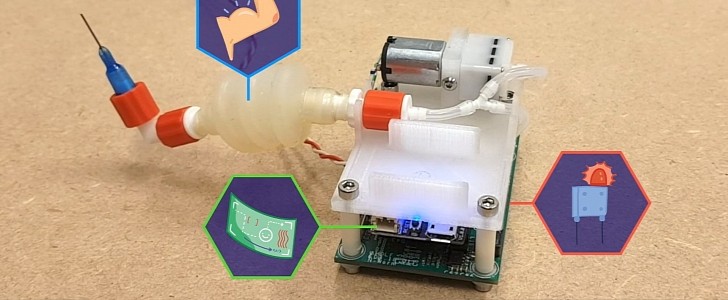Although you might mistake it for a toy, this robot is actually a lot smarter than it seems. So smart, in fact, that it can learn how to move faster, in a specific direction, without having prior knowledge.
Some robots look complex or even threatening, but what most of them have in common is that they are programmed to perform specific actions. Well, what if a robot were able to learn as it goes and modify its actions accordingly? This is what researchers at AMOFL Institute, in the Netherlands, wanted to test.
The result is a self-learning system comprised of several small and simple robots, which manages to teach itself how to move similarly to a train, on a circular trajectory. In order to get there, the first step was to choose very simple individual robots. According to Bas Overvelde, Principal Investigator of the Soft Robotic Matter group at AMOLF, it was important to demonstrate that a robot can learn to adapt to the environment even without complex models.
Each simple robot has a minicomputer, a motion sensor and a bellows with a pump and a needle. By connecting two or more of these robots, through their bellows, they push each other away, creating movement. This is how the train is formed and the goal is to see if it can get itself to move in one direction.
The only thing that each robots is programmed to do is to switch the pump on and off and then try to move fast in one direction. They repeat this cycle every few seconds, while also measuring the speed. Based on this, they then try to make adjustments and understand whether it helps them to move faster or not. This is how the self-learning system optimizes its movement, even though none of the individual robots were specifically programmed to know how to move forward.
AMOLF researchers went even further and discovered that short-term memory is more effective in this case. The system worked better when the robots decided when to move based on their last speed measurements, not on their overall best speed measurements. Another interesting finding showed that the system managed to stay on track even when one of the robots was intentionally damaged.
Next, researchers at AMOLF are planning to build self-learning robots with a more complex behavior, with important applications in soft robotics.
The result is a self-learning system comprised of several small and simple robots, which manages to teach itself how to move similarly to a train, on a circular trajectory. In order to get there, the first step was to choose very simple individual robots. According to Bas Overvelde, Principal Investigator of the Soft Robotic Matter group at AMOLF, it was important to demonstrate that a robot can learn to adapt to the environment even without complex models.
Each simple robot has a minicomputer, a motion sensor and a bellows with a pump and a needle. By connecting two or more of these robots, through their bellows, they push each other away, creating movement. This is how the train is formed and the goal is to see if it can get itself to move in one direction.
The only thing that each robots is programmed to do is to switch the pump on and off and then try to move fast in one direction. They repeat this cycle every few seconds, while also measuring the speed. Based on this, they then try to make adjustments and understand whether it helps them to move faster or not. This is how the self-learning system optimizes its movement, even though none of the individual robots were specifically programmed to know how to move forward.
AMOLF researchers went even further and discovered that short-term memory is more effective in this case. The system worked better when the robots decided when to move based on their last speed measurements, not on their overall best speed measurements. Another interesting finding showed that the system managed to stay on track even when one of the robots was intentionally damaged.
Next, researchers at AMOLF are planning to build self-learning robots with a more complex behavior, with important applications in soft robotics.

